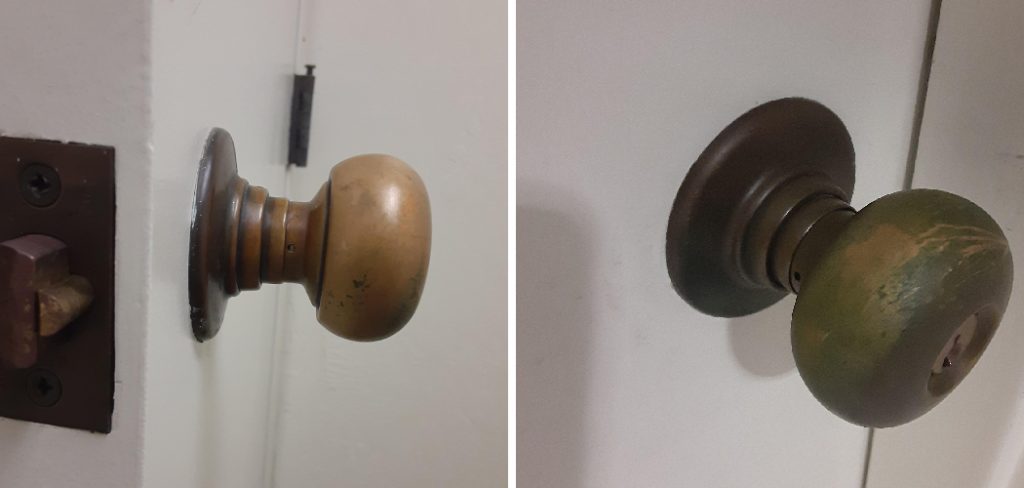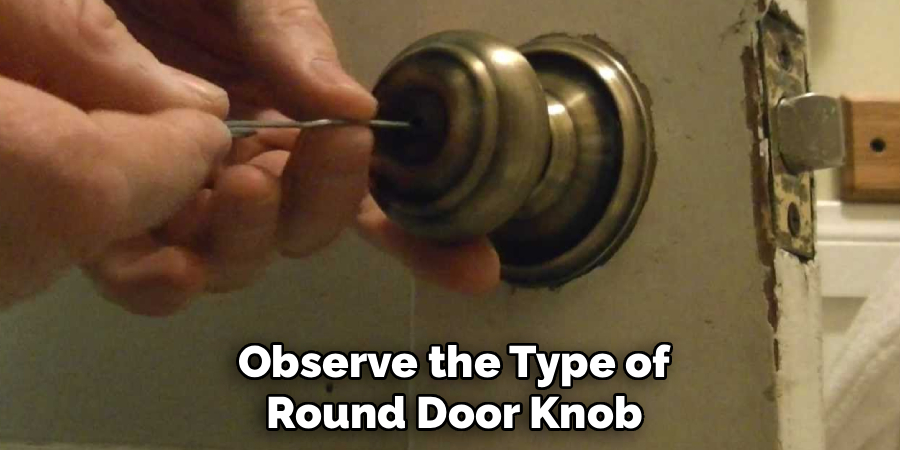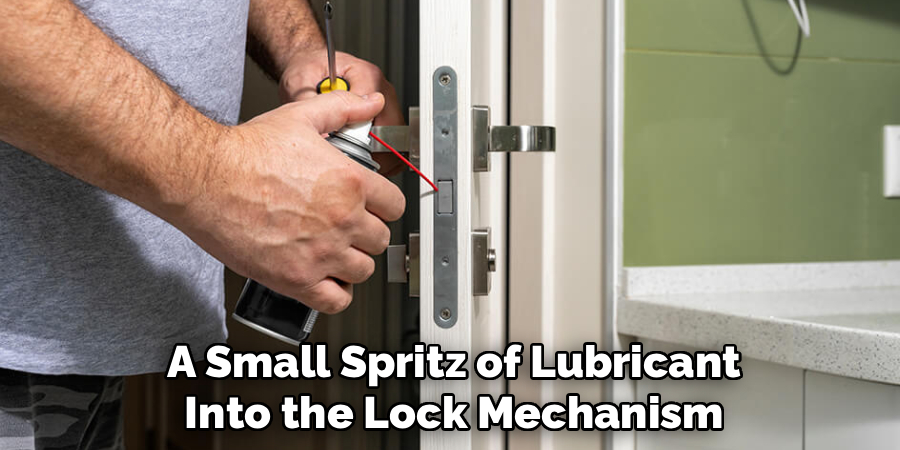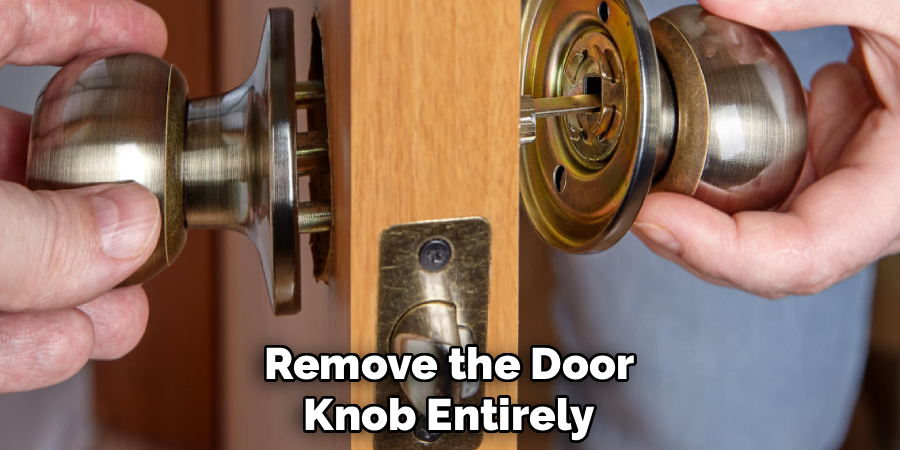Unlocking a round door knob may seem tricky at first, especially if you find yourself on the wrong side of a locked door without a key. Many of us have encountered this frustrating situation in our homes, offices, or even during travel. Despite the initial stress, most round door knobs can be unlocked with simple tools and a bit of patience.

This guide on how to unlock round door knob will walk you through everything you need to know to unlock a round door knob effectively and safely. You’ll learn which tools and materials are required, the detailed steps involved, and extra tips to make the process smoother. Whether you’re facing a bathroom lockout or helping a friend in need, these instructions have you covered.
Tools and Materials You’ll Need
- Flathead Screwdriver
- Paperclip or Bobby Pin
- Credit Card or Plastic Shim
- Small Flashlight
- Lubricant (Optional)
- Phillips Screwdriver (Optional)
- Needle-nose Pliers
- Towel or Soft Cloth (to Protect Surfaces)
8 Step-by-step Guides on How to Unlock Round Door Knob
Step 1: Assess the Situation and Identify the Lock Type
Before you attempt to unlock the door, take a moment to observe the type of round door knob you are dealing with. Some knobs have a small hole or slot on the outside, indicating a privacy lock, while others may require a key. Understanding the lock design will help you choose the best unlocking method.

Checking for damage, loose screws, or unusual resistance is essential. This will ensure you don’t accidentally worsen the situation by using the wrong technique. Spend a minute or two evaluating whether the door is simply jammed or genuinely locked.
Step 2: Gather Your Tools and Prepare the Area
Once you have identified the type of lock and assessed the situation, it’s time to collect the necessary tools. Place them within easy reach and prepare a small work area. Using a towel or cloth underneath the knob can help protect surfaces from scratches caused by tools.
Proper preparation will make the entire process smoother and help you avoid stress if you need to work quickly. Remember to keep a small flashlight handy if the lighting is poor, making it easier to see inside the lock mechanism.
Step 3: Try the Standard Unlocking Method First
If your round door knob has a small hole on its face, this is typically a privacy lock that unlocks with a simple tool. Take a straightened paperclip, bobby pin, or a designated unlocking tool and gently insert it into the hole. You should feel a bit of resistance as you press the release button inside.
With gentle pressure, push until you hear or feel a click, which usually means the lock has disengaged. If nothing happens, do not force the tool, as this can damage the mechanism. Instead, move on to the next step or try a different angle within the hole.
Step 4: Use a Flathead Screwdriver for Alternative Access
If the standard unlocking method doesn’t work or the hole is too small, try using a flathead screwdriver. Carefully insert the tip of the screwdriver into the slot or hole, making sure not to force it. Twist gently while applying slight inward pressure.
This method can sometimes move the locking mechanism manually, causing it to release. Always use minimal force to avoid damaging the knob or mechanism. If you encounter stiff resistance, stop to reassess your approach or try a different tool.

Step 5: Try the Credit Card or Plastic Shim Technique
For knob locks with a spring latch, a sturdy credit card or plastic shim can sometimes be used. Slide the card between the door and the frame near the latch. Wiggle and push the card towards the latch, trying to retract it from the inside.
This method works best on doors that aren’t tightly fitted or when the latch isn’t deadbolted. Be careful not to damage your card or the door frame. Some practice might be required to master this technique, so patience is key.
Step 6: Remove the Door Knob if Necessary
If the above steps fail, you may need to remove the door knob entirely. Use a Phillips screwdriver to take out the screws holding the knob in place. Once removed, you can access the locking mechanism and manually unlock the door from the inside.
Handle the pieces carefully to avoid losing screws or damaging the knob. Lay small parts on a towel to keep everything organized. After unlocking and fixing the situation, reassemble the knob by reversing the process.
Step 7: Apply Lubricant if the Lock Seems Stuck
Sometimes a lock feels stuck due to a lack of lubrication or internal debris. Apply a small amount of lubricant (such as WD-40 or graphite powder) to the keyhole or moving parts. Use a cloth to catch any drips and keep the area clean.
Wait a few minutes for the lubricant to work, then gently try unlocking again using the appropriate method. Lubrication can often make a stubborn lock respond with less effort. Avoid using too much lubricant, as excess can attract dirt over time.
Step 8: Seek Help if All Else Fails
If you cannot unlock the door after trying all the above steps, don’t hesitate to ask for help. Sometimes an extra pair of hands or eyes makes a big difference. Call a trusted friend, neighbor, or building maintenance for assistance.
If the situation is urgent—such as a child or pet locked inside—consider contacting a professional locksmith or emergency services. Safety is always the first priority, and professional help is the right choice if risk is involved.
Following these steps on how to unlock round door knob, you should now be able to successfully open your round door knob without any difficulty. Remember to always stay calm and try these methods before seeking professional help.

Do You Need To Use Professionals?
While unlocking a round doorknob is often a straightforward DIY task, there are times when hiring a professional is necessary. If the lock appears broken, is especially old, or is part of a high-security system, calling a locksmith can prevent further damage. Professionals also have specialized tools and experience for stubborn or unusual cases.
If someone is locked inside a room or in distress, professional assistance is the safest and quickest solution. In rental or institutional settings, always consult property management to avoid liability or policy issues. Timely expert intervention can save time, money, and hassle.
How Much Will It Cost?
Unlocking a round door knob yourself typically costs nothing if you already have basic tools at home. A locksmith visit can range from $50 to $150, depending on the time of day and lock complexity. Emergency or after-hours services might incur additional fees.
If you decide to replace the knob or lock, expect hardware costs between $15 and $75. Using a professional also means paying for expertise and peace of mind, especially in tricky situations. Always get a price estimate before agreeing to professional services to avoid unexpected charges.
Frequently Asked Questions
Q1: What Should I Do If I Don’t Have Any Tools Handy?
If you find yourself without tools, look around for everyday objects like hairpins, paperclips, or sturdy plastic cards that might work in a pinch. Sometimes, gently knocking on the door and asking for help from the other side is an option, especially if it’s a bathroom or bedroom. Think outside the box, but always prioritize safety and avoid using anything that could cause harm or get stuck. If all else fails, consider seeking help from neighbors or building maintenance. Waiting for help might take longer, but it often prevents accidental damage.
Q2: Can Unlocking a Round Door Knob Damage the Lock?
Repeated or forceful attempts to unlock a round door knob can indeed cause damage, especially if you use too much force or the wrong tools. Pushing, twisting, or prying aggressively may bend or break the lock mechanism.

For best results, use gentle, controlled movements, and switch techniques if one method isn’t working. If you sense resistance or something feels off, take a break and reassess. Minor cosmetic damage is sometimes unavoidable, but patience generally pays off.
Q3: Are There Any Doors That Should Not Be Unlocked Without Professionals?
Some doors use high-security locks or are part of integrated access systems, making them much harder to unlock without professional experience or special tools. Exterior security doors, vaults, and high-end models can have anti-tampering features that make DIY attempts risky or even illegal in some areas. If you suspect your round door knob is part of such a system, do not proceed with DIY methods. Calling a locksmith ensures you won’t compromise the lock’s security or invalidate warranties.
Q4: What Precautions Should I Take Before Attempting to Unlock a Door?
Always double-check that you have the authority and reason to unlock the door, especially in shared or rented spaces. Safeguard your fingers and the door’s finish by using towels and working slowly. Keep children and pets at a safe distance during the process. Avoid any techniques that could create sharp edges or fragments, and keep your tools away from your face. If you are unsure or the lock feels jammed, don’t hesitate to pause and seek help.
Conclusion
Unlocking a round door knob can be a manageable task when approached methodically and safely. With the right tools, techniques, and a calm mindset, most lockouts are resolved quickly without professional intervention.
Always weigh the risks before beginning and don’t hesitate to seek help if needed. Preventing future lockouts by keeping spare keys and upgrading locks is a wise precaution. The knowledge and skills gained from this experience can boost your confidence and help others in similar situations. Thanks for reading this guide on how to unlock round door knob.
About
Safety Fic is a distinguished figure in the world of Diy design, with a decade of expertise creating innovative and sustainable Diy solutions. His professional focus lies in merging traditional craftsmanship with modern manufacturing techniques, fostering designs that are both practical and environmentally conscious. As the author of diy, Safety Fic delves into the art and science of Safety Fic-making, inspiring artisans and industry professionals alike.
Education RMIT University
(Melbourne, Australia) Associate Degree in Design (Safety Fic) Focus on sustainable design, industry-driven projects, and practical craftsmanship. Gained hands-on experience with traditional and digital manufacturing tools, such as CAD and CNC software.
Nottingham Trent University
(United Kingdom) Bachelor’s in diyfastly.com and Product Design (Honors) Specialized in product design with a focus on blending creativity with production techniques. Participated in industry projects, working with companies like John Lewis and Vitsoe to gain real-world insights.
Publications and Impact
In diy, Safety Fic his insights on indoor design processes, materials, and strategies for efficient production. His writing bridges the gap between artisan knowledge and modern industry needs, making it a must-read for both budding designers and seasoned professionals.
